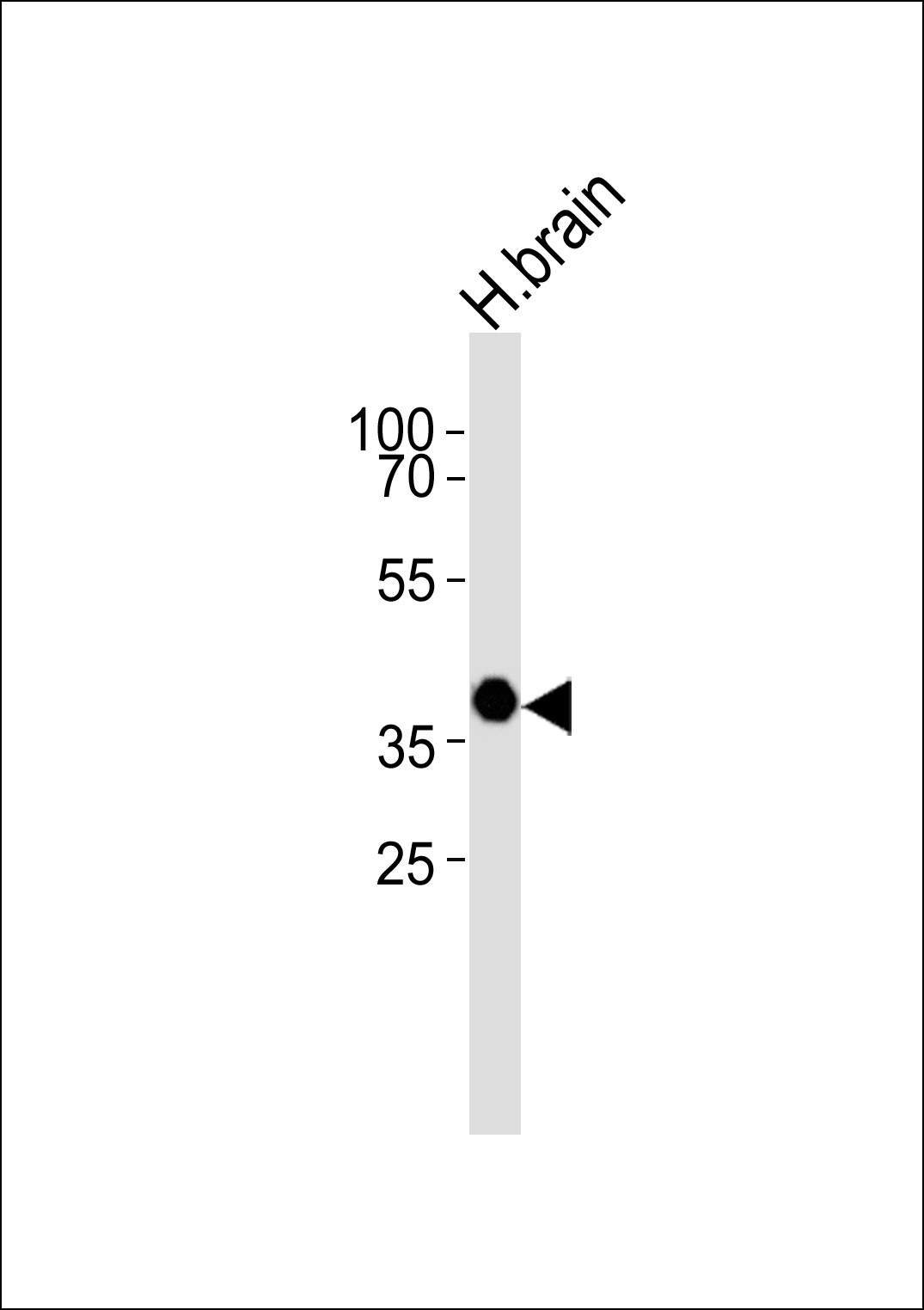OPN5 Antibody
Purified Rabbit Polyclonal Antibody (Pab)
- 产品详情
- 实验流程
Application
| WB, IF |
|---|---|
| Primary Accession | Q6U736 |
| Reactivity | Human, Mouse |
| Host | Rabbit |
| Clonality | polyclonal |
| Calculated MW | 39727 Da |
| Gene ID | 221391 |
|---|---|
| Other Names | Opsin-5, G-protein coupled receptor 136, G-protein coupled receptor PGR12, Neuropsin, Transmembrane protein 13, OPN5, GPR136, PGR12, TMEM13 |
| Dilution | WB~~ 1:1000 IF~~1:100 |
| Format | Rabbit IgG in phosphate buffered saline (without Mg2+ and Ca2+), pH 7.4, 150mM NaCl, 0.09% (W/V) sodium azide and 50% glycerol. |
| Storage Conditions | -20℃ |
| Name | OPN5 |
|---|---|
| Synonyms | GPR136, PGR12, TMEM13 |
| Function | G-protein coupled receptor which selectively activates G(i) type G proteins via ultraviolet A (UVA) light-mediated activation in the retina (By similarity). Preferentially binds the chromophore 11-cis retinal and is a bistable protein that displays emission peaks at 380 nm (UVA light) and 470 nm (blue light) (PubMed:22043319). Required for the light-response in the inner plexiform layer, and contributes to the regulation of the light-response in the nerve fiber layer, via phosphorylated DAT/SLC6A3 dopamine uptake (By similarity). Involved in local corneal and retinal circadian rhythm photoentrainment via modulation of the UVA light-induced phase-shift of the retina clock (By similarity). Acts as a circadian photoreceptor in the outer ear, via modulation of circadian clock-gene expression in response to violet light during the light-to-dark transition phase and night phase of the circadian cycle (By similarity). Required in the retina to negatively regulate hyaloid vessel regression during postnatal development via light-dependent OPN5-SLC32A1-DRD2-VEGFR2 signaling (By similarity). Involved in the light-dependent regulation of retina and vitreous compartment dopamine levels (By similarity). |
| Cellular Location | Cell membrane; Multi-pass membrane protein |
| Tissue Location | Detected in brain and retina and cell lines derived from neural retina. |
Research Areas
For Research Use Only. Not For Use In Diagnostic Procedures.
Application Protocols
Provided below are standard protocols that you may find useful for product applications.
REFERENCES
Tarttelin E.E.,et al.FEBS Lett. 554:410-416(2003).
Fredriksson R.,et al.FEBS Lett. 554:381-388(2003).
Vassilatis D.K.,et al.Proc. Natl. Acad. Sci. U.S.A. 100:4903-4908(2003).
Mungall A.J.,et al.Nature 425:805-811(2003).
终于等到您。ABCEPTA(百远生物)抗体产品。
点击下方“我要评价 ”按钮提交您的反馈信息,您的反馈和评价是我们最宝贵的财富之一,
我们将在1-3个工作日内处理您的反馈信息。
如有疑问,联系:0512-88856768 tech-china@abcepta.com.
¥ 1,500.00
Cat# AP50765























 癌症的基本特征包括细胞增殖、血管生成、迁移、凋亡逃避机制和细胞永生等。找到癌症发生过程中这些通路的关键标记物和对应的抗体用于检测至关重要。
癌症的基本特征包括细胞增殖、血管生成、迁移、凋亡逃避机制和细胞永生等。找到癌症发生过程中这些通路的关键标记物和对应的抗体用于检测至关重要。 为您推荐一个泛素化位点预测神器——泛素化分析工具,可以为您的蛋白的泛素化位点作出预测和评分。
为您推荐一个泛素化位点预测神器——泛素化分析工具,可以为您的蛋白的泛素化位点作出预测和评分。 细胞自噬受体图形绘图工具为你的蛋白的细胞受体结合位点作出预测和评分,识别结合到自噬通路中的蛋白是非常重要的,便于让我们理解自噬在正常生理、病理过程中的作用,如发育、细胞分化、神经退化性疾病、压力条件下、感染和癌症。
细胞自噬受体图形绘图工具为你的蛋白的细胞受体结合位点作出预测和评分,识别结合到自噬通路中的蛋白是非常重要的,便于让我们理解自噬在正常生理、病理过程中的作用,如发育、细胞分化、神经退化性疾病、压力条件下、感染和癌症。







